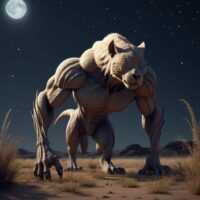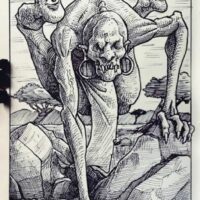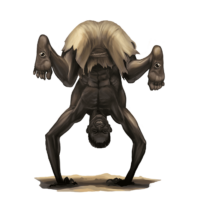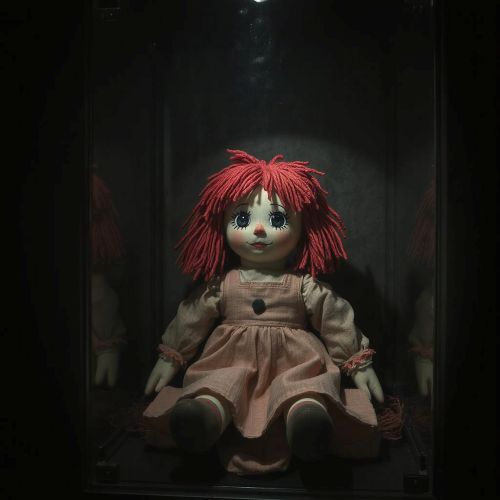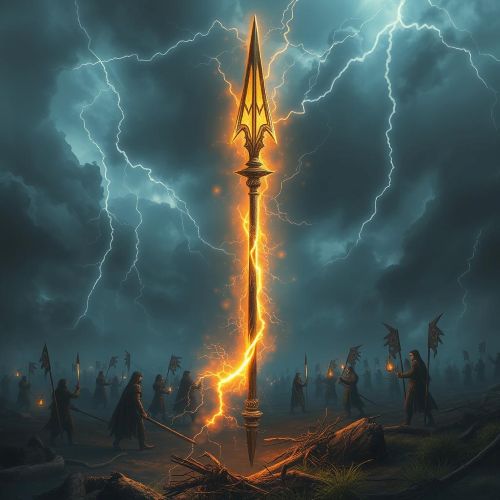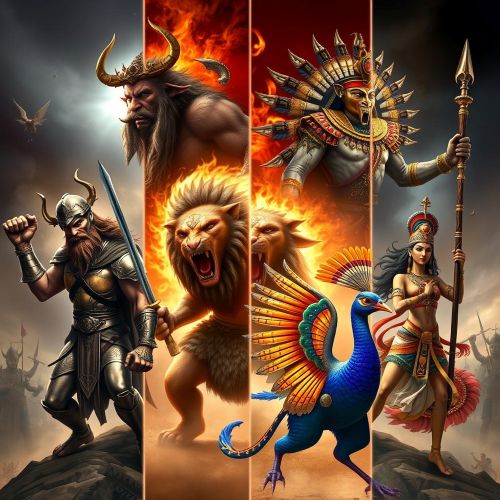Herne the Hunter : The Ghostly Hunter
Listen
At a glance
| Description | |
|---|---|
| Origin | Welsh Mythology |
| Classification | Hybrids |
| Family Members | N/A |
| Region | Wales |
| Associated With | Natural World, Forests, Hunting, Shapeshifting |
Herne the Hunter
Introduction
Herne the Hunter is a spectral figure from English folklore, closely tied to Windsor Forest and Great Park in Berkshire. Described as a ghostly huntsman with antlers, he is linked to an ancient oak and the eerie echoes of the wild hunt. His legend gained prominence through Shakespeare’s The Merry Wives of Windsor (c. 1597), which cemented his image in popular imagination. Though his true origins remain elusive, theories connect him to historical figures, pagan gods, or primal archetypes. Over time, Herne has evolved from a local ghost story into a powerful symbol of nature’s untamed spirit and the supernatural realm.
Physical Traits
Herne the Hunter is instantly recognizable by the stag-like antlers adorning his head, a feature that reinforces his deep connection to the wilderness. Some accounts depict him wearing a deerskin hood with attached antlers, while others describe them as naturally growing from his skull. Dressed in green, he blends seamlessly with the forest, embodying its untamed spirit. Often seen riding a spectral horse and trailed by ghostly hounds, Herne exudes an eerie presence. In some modern retellings, his form takes on a more bestial aspect, with hoofed feet, a wild mane, and glowing eyes that pierce through the shadows of the ancient woodlands.
Family
Herne the Hunter is largely depicted as a solitary figure, with no clear familial ties in traditional folklore. Unlike many mythological beings who belong to divine lineages, his legend focuses on his spectral presence and role as a guardian of the wild. Some interpretations, however, draw parallels between Herne and ancient deities such as Cernunnos, Woden, or Silvanus, suggesting he may be an echo of older forest spirits. Others propose that Herne was once a mortal chosen to embody the essence of the hunt, transformed into a supernatural figure bound to the woodland realm.
Other names
Herne the Hunter is known by various names and titles that reflect his shifting identity across folklore and mythology. In early versions of The Merry Wives of Windsor, he appears as “Horne,” sparking speculation about a possible historical basis. He is sometimes called “The Wild Huntsman” or “The Ghostly Huntsman,” emphasizing his spectral nature and leadership of the phantom hunt. Some interpretations associate him with “The Horned One” or “The Forest Spirit,” connecting him to pagan deities like Cernunnos. Additionally, he is occasionally linked to “The Green Man,” symbolizing nature’s cycle of death and rebirth. These diverse names underscore Herne’s role as both a fearsome hunter and a guardian of the wild.
Powers and Abilities
Herne the Hunter is imbued with supernatural abilities that reinforce his role as both a guardian and an omen of the wild. He is often portrayed as the master of the Wild Hunt, leading a ghostly procession of spectral hounds and lost souls across the night sky. Some legends claim he can manipulate the elements, summoning fierce storms and winds that howl through the forest. His presence is said to induce overwhelming dread, with glowing eyes that pierce through the darkness and chains that rattle ominously in the air. In certain tales, Herne exhibits shape-shifting abilities, allowing him to merge with the trees or take on the form of animals. Modern interpretations also depict him as a master archer and hunter, possessing enhanced strength, speed, and an uncanny ability to track his prey through supernatural means.
Modern Day Influence
Herne the Hunter’s legend continues to thrive in modern culture, permeating literature, spirituality, and entertainment. His presence in fiction is widespread, with authors drawing on his mysterious aura to explore themes of nature, magic, and the supernatural. Beyond Shakespeare’s reference in The Merry Wives of Windsor, Herne has inspired characters and mythologies in fantasy series such as The Dark Is Rising by Susan Cooper and Memory, Sorrow, and Thorn by Tad Williams. His influence extends to folklore-driven narratives, where he often embodies the primal and enigmatic forces of the wild.
In contemporary spirituality, Herne holds a significant place within neo-pagan and Wiccan traditions, symbolizing the sacred connection between humanity and nature. He is frequently linked to Cernunnos and the Green Man, featuring prominently in seasonal rituals that honor cycles of life, death, and rebirth.
Herne’s impact is also visible in music, with references in songs by Clannad, Cradle of Filth, and Marillion. His mystique has inspired visual artists, game designers, and filmmakers, leading to appearances in comic books, television, and video games. Notably, he played a guiding role in Robin of Sherwood (1980s), reinforcing his image as a protector of the forest. More recently, in the Disney+ series Renegade Nell (2024), Herne’s presence is interpreted as a harbinger of change and destiny. His continued relevance in diverse media showcases his adaptability and enduring allure as a symbol of the wild and the supernatural.
Related Images
Source
Baring-Gould, Sabine. “A Book of Ghosts.” Cambridge Scholars Publishing, 2009.
Briggs, Katharine. “An Encyclopedia of Fairies: Hobgoblins, Brownies, Bogies, and Other Supernatural Creatures.” Pantheon Books, 1976.
MacCulloch, John Arnott. “The Religion of the Ancient Celts.” Constable and Company Ltd., 1911.
Shakespeare, William. “The Merry Wives of Windsor.” Folger Shakespeare Library, 1999.
“Herne the Hunter.” Wikipedia. Accessed March 1, 2025.
“The Legend of Herne the Hunter.” Historic UK. Accessed March 1, 2025.
“Herne the Hunter: Exploring the Myth and Significance of this Spectral Figure.” Accessed March 1, 2025.
Frequently Asked Questions
What is lorem Ipsum?
I am text block. Click edit button to change this text. Lorem ipsum dolor sit amet, consectetur adipiscing elit. Ut elit tellus, luctus nec ullamcorper mattis, pulvinar dapibus leo.
What is lorem Ipsum?
I am text block. Click edit button to change this text. Lorem ipsum dolor sit amet, consectetur adipiscing elit. Ut elit tellus, luctus nec ullamcorper mattis, pulvinar dapibus leo.
What is lorem Ipsum?
I am text block. Click edit button to change this text. Lorem ipsum dolor sit amet, consectetur adipiscing elit. Ut elit tellus, luctus nec ullamcorper mattis, pulvinar dapibus leo.
What is lorem Ipsum?
I am text block. Click edit button to change this text. Lorem ipsum dolor sit amet, consectetur adipiscing elit. Ut elit tellus, luctus nec ullamcorper mattis, pulvinar dapibus leo.
What is lorem Ipsum?
I am text block. Click edit button to change this text. Lorem ipsum dolor sit amet, consectetur adipiscing elit. Ut elit tellus, luctus nec ullamcorper mattis, pulvinar dapibus leo.

